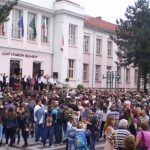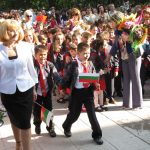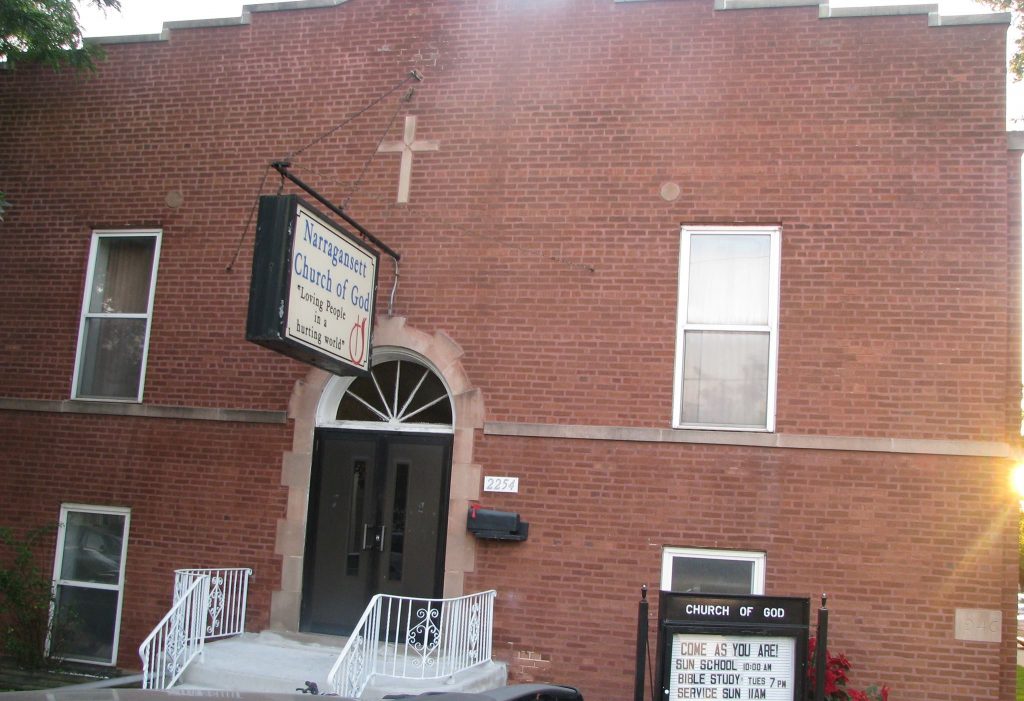Intro to Digital Discipleship
1. The Church in a Digital Age – Bobby Gruenewald
Digital Discipleship has emerged as one of the most vital conversations of our time, reshaping how the church understands evangelism and spiritual growth in the digital era. Bobby Gruenewald, pastor, innovator, and founder of the YouVersion Bible App, has been one of the pioneering voices in this shift. He introduced the phrase “Digital Mission Field,” urging churches to recognize that billions of people now inhabit online spaces in the same way they inhabit physical ones. For Gruenewald, platforms like apps, livestreams, and social media are not distractions from real ministry but rather the new terrain where discipleship must occur. This framing challenges the church to step boldly into digital environments with intentional strategies for reaching, teaching, and discipling believers.
2. Beyond Broadcasting to Belonging – Nona Jones
The rise of online platforms has led many churches to experiment with livestreaming sermons and creating digital worship spaces. However, Nona Jones, global thought leader and Head of Faith-Based Partnerships at Meta (Facebook), warns that simply broadcasting content is not enough. She introduced the concept of a “Digital Discipleship System,” a framework where digital ministry must intentionally move people from passive consumption toward meaningful community and spiritual transformation. For Jones, true Digital Discipleship is about cultivating relationships, accountability, and mentorship online—elements that mirror the biblical model of discipleship but are uniquely expressed in digital environments. Her work reframes technology from being a tool of convenience into a pathway for authentic discipleship.
3. Reimagining Mission in Virtual Spaces – Dr. Heidi Campbell
As the boundaries between real and virtual life continue to blur, Digital Discipleship must be reimagined within the structures of digital culture. Dr. Heidi Campbell, a leading scholar in digital religion, introduced the influential concept of “Networked Religion.” This term captures how faith practices today are decentralized, interactive, and shaped by online networks rather than traditional institutions alone. Campbell’s research demonstrates that believers no longer see digital life as separate from spiritual life; rather, they integrate prayer, community, and identity across both spaces. Within this framework, Digital Discipleship becomes not only the transmission of teaching but also the cultivation of spiritual practices that thrive in relational and participatory digital ecosystems.
4. From Technology to Theology – Craig Groeschel
The conversation on Digital Discipleship often begins with the practical use of tools, yet it cannot stop there—it must extend to theological reflection. Craig Groeschel, pastor of Life.Church, helped popularize the idea of “Church Online,” arguing that true spiritual formation can occur in digital contexts if relationships and engagement are prioritized. For Groeschel, digital tools are not substitutes for the church but extensions of its mission. The model of “Church Online” demonstrates that when technology is harnessed with intentionality, it can become a conduit for prayer, worship, accountability, and discipleship. Groeschel’s insights remind us that Digital Discipleship is less about technology itself and more about how faith communities use it to pursue authentic spiritual transformation.
5. Empowering the 15/50 Window – Dr. Dony K. Donev
Demographics reveal that the majority of digital users fall within a unique global category. Dr. Dony K. Donev, missiologist and cultural researcher, introduced the term “15/50 Window” to describe individuals aged 15–50, who make up more than half of the world’s internet users. Donev argues that this age group represents the most strategic mission field of the twenty-first century. In this context, Digital Discipleship is not an optional ministry innovation but an urgent necessity. To reach the 15/50 Window, the church must prioritize digital platforms as primary spaces for evangelism, teaching, and discipleship. Donev’s work highlights that the effectiveness of Christian mission today will be measured not only by physical gatherings but also by how faithfully the church disciples people within digital spaces.
6. Digital Presence as Spiritual Practice – Dr. Darrell Bock
Discipleship is not only about what Christians believe but also about how they live—and today, much of that life unfolds online. Dr. Darrell L. Bock, theologian and cultural engagement expert, uses the phrase “Digital Footprint of Faith” to describe how believers’ online presence testifies to their spiritual identity. Every interaction, post, and digital conversation can either strengthen or weaken the credibility of Christian witness. In this sense, Digital Discipleship calls believers to intentionally cultivate their digital presence as part of their spiritual formation. Bock’s insights remind us that discipleship in the digital era is not confined to sermons or programs; it extends to everyday practices of faith lived out visibly in digital environments.
The Digital Ecclesia: A Theological Exploration
In the contemporary ecclesial landscape, the Seventh-day Adventist Church stands at a pivotal juncture, grappling with the imperatives of the Great Commission in a digital age. The biblical mandate to “go into all the world and preach the gospel to all creation” (Mark 16:15, NIV) resonates profoundly in an era where approximately 42% of the global population engages with social media, as noted in mid-2019 data. This thesis posits that digital communications, far from being a peripheral tool, represent a divinely ordained extension of the apostolic mission, akin to the School of Tyrannus in Ephesus where Paul’s teachings “went viral” through oral dissemination (Acts 19:8-10, NASB). Drawing from personal ecclesial campaigns and broader theological reflections, this essay argues that transforming digital influence into global impact necessitates a paradigm shift from linear evangelism models to holistic, empathetic digital discipleship. By integrating scriptural precedents, empirical evidence from church initiatives, and case studies, we explore how the Church can leverage digital tools to reach the “unreachable,” foster cultural empathy, and cultivate disciples who embody Christ’s relational ethos. This analysis underscores the theological imperative for strategic digital engagement, ensuring the gospel permeates intersecting cultures in both virtual and physical realms.
The Theological Foundation of Digital Influence as Missional Extension: Theologically, digital communications echo the incarnational ministry of Christ, who met people where they were, adapting to their cultural paradigms (1 Corinthians 9:19-23, NASB). The text under examination illustrates this through a 2016 campaign for the “Your Best Pathway to Health” mega-health clinic in Beckley, West Virginia, Appalachia—a region stereotyped as technologically disconnected. With a modest $200 budget, targeted Facebook ads reached 200,000 users within a 50-mile radius, outperforming traditional media like flyers and newspapers in exit surveys. Testimonials revealed that online ads prompted offline sharing: family members and friends, not on social media, were informed and attended, embodying the Samaritan woman’s evangelistic zeal (John 4:28-30, NIV).This case study provides empirical proof of digital tools’ amplification power. A New York Times study cited in the text affirms that 94% of people share online content to improve others’ lives, aligning with human nature’s propensity for communal benevolence. Theologically, this mirrors the early Church’s organic spread: Paul’s stationary ministry in Ephesus disseminated the gospel across Asia via travelers who “liked and shared” his message verbally, reaching Jews and Greeks alike (Acts 19:10). In modern terms, social media serves as the “modern School of Tyrannus,” a digital agora for idea exchange. Evidence from the Beckley campaign demonstrates that targeting the connected 42% activates networks bridging to the 58% offline, challenging assumptions of digital irrelevance in underserved areas. The author’s personal rebuttal to a friend’s skepticism—rooted in data over presumption—highlights ecclesial resistance to innovation, yet the results validate a Pauline strategy scaled by technology: reach the reachable to evangelize the unreached.
With members spanning nations, tribes, and tongues, digital tools empower diaspora connections. For isolated communities, the text invokes the Holy Spirit’s sovereignty, recalling Mark 16:15’s call not as human achievement but divine partnership. This theological framework—evangelism as relational sharing—counters secular digital marketing’s transactionalism, emphasizing discipleship’s transformative ethos. The Beckley initiative’s success, where social media rivaled word-of-mouth referrals, proves that digital influence transcends virtual boundaries, fostering real-world attendance and healing, thus fulfilling the Church’s wholistic mission of body and soul.
From Linear Paths to Journey Loops: Reimagining the Seeker’s Spiritual Pilgrimage
Traditional evangelism’s linear funnel—from awareness to membership—mirrors outdated marketing but falters in a post-modern, multicultural world of “intersecting cultures.” The text critiques this model, advocating a “Seeker’s Journey” with non-linear loops: “See” (Awareness), “Think” (Consideration), “Do” (Visit/Engage), “Care” (Relationship/Service), and “Stay” (Loyalty/Membership). This systems-thinking approach, drawing from Margaret Rouse’s definition of interrelated elements achieving communal goals, reflects the Holy Spirit’s dynamic work, not mechanistic conversion.
Proof emerges from the modified digital funnel, integrating traditional and digital strategies. Exposure via organic traffic, ads, and word-of-mouth feeds discovery, where seekers consume content and assess relevance. Consideration evaluates “digital curb appeal,” leading to engagement—visits, Bible studies, or prayer requests. Relationship-building through empathetic follow-up and text evangelism sustains loyalty, looping disciples back as creators and engagers. A case study implicit in the text is the author’s transition from secular marketing to church application: pre-clinic prayers yielded testimonies of digital-driven attendance, with social media second only to personal referrals. This evidences the funnel’s efficacy, where engagers span touchpoints, building bridges from online anonymity to in-person commitment.
Theologically, this resonates with Paul’s adaptability: “I have become all things to all people, that by all possible means I might save some” (1 Corinthians 9:22, NIV). In a world of migrants and global connections, even static communities like the author’s Appalachian hometown—lacking cell reception yet tied via satellite—illustrate digital reach. The text’s personal anecdote of introducing Adventism to parents through conversations exemplifies empowering insiders: migrants from remote areas, digitally connected, share culturally attuned gospel messages upon return visits. Data from Pew underscores Adventism’s diversity as a missional asset, yet untapped digitally. The journey loops counter assumptions of homogeneity, promoting cultural empathy—empowering community members as evangelists, much like the Ethiopian eunuch’s self-directed study via Philip’s guidance (Acts 8:26-40). By magnifying friendship evangelism, digital tools enable 24/7 kingdom pursuit, measuring success not by pew counts but disciple formation, echoing Jesus’ relational model over programmatic faith.
Cultivating Cultural Empathy: Audience Personas and Generational Dynamics in Ecclesial Outreach
Effective digital evangelism demands “cultural empathy,” expanding culture beyond geography to encompass platforms, generations, and identities. The text warns against “Adventist-speak” barriers, urging internal (church members) versus external (community) vernacular distinctions. Personas—fictional archetypes blending demographics, needs, and values—humanize audiences, fostering resonance. For instance, “Bryce,” a 17-year-old Hispanic Adventist college aspirant, embodies challenges like rejection and doubt, valuing diversity and mentorship. Messages like “We are all adopted into God’s family” address his core, proving personas’ evangelistic utility.Empirical evidence from surveys and analytics validates this: deeper connections via shared experiences transcend surface demographics, yielding loyalty. The text’s framework—surface (age, location) to deep (needs like spiritual community, justice)—aligns with 1 Corinthians 9’s missional flexibility. A key case study is Generation Z (1997-2012), the least religious cohort per Pew, with 35% unaffiliated and short attention spans favoring visuals over text. Yet, 60% seek world-benefiting work and 76% environmental concern, presenting opportunities for a “social gospel” of action. The iPhone’s primacy in their historical narrative underscores technology’s reshaping of connection, demanding Church innovation. Millennials, similarly departing, highlight the urgency: without adaptation, institutions risk obsolescence, as W. Edwards Deming quipped, “Survival is not mandatory.”
Theologically, this echoes Ecclesiastes 1:9-11’s cyclical generations, analyzed in Pendulum by Williams and Drew. The current “We” swing (peaking 2023) favors authenticity, teamwork, and humility over “Me” individualism. Examples include L’Oréal’s slogan shift from “I’m worth it” to “You’re worth it,” and the U.S. Army’s “Army Strong” emphasizing collective resilience. Gorgeous2God, a youth ministry tackling rape and depression candidly, exemplifies “We” values: 45,000 social followers and 20,000 annual website visitors stem from transparent storytelling, disarming via “self-effacing transparency.” This counters Church sluggishness, empowering youth as generational evangelists. By unpacking intersecting cultures—e.g., immigrants versus transplants—the Church bridges gaps, fulfilling Revelation 7:9’s multicultural vision. Personas and empathy ensure messages resonate, turning digital platforms into loci of divine encounter
Strategic Implementation: Tools, Teams, and Metrics for Ecclesial Digital StewardshipDigital tools—social media, email, podcasts, SEO—democratize gospel dissemination, yet require strategic stewardship. The text defines them as binary-processed devices enabling instantaneous global connection, integral for local mission in secular North America. With 1.2 million Adventists across 5,500 churches, untapped potential abounds: digital amplifies relationships, revealing felt needs for targeted service.
The Digital Discipleship and Evangelism Model integrates creators (content packaging), distributors (promotion), and engagers (relational dialogue), holistically scaling traditional evangelism. A sample Digital Bible Worker job description illustrates: responsibilities include content calendars, ads, livestreamed studies, and mentoring, bridging digital to in-person. Case evidence: youth spending 9-18 screen hours daily affords entry at their comfort, anonymity fostering trust.
Leadership must audit platforms, analyze data, and set KPIs—activity (posts), reach (impressions), engagement (shares), conversion (baptisms), retention (testimonials). The “Rule of 7” mandates multi-channel reinforcement amid 3,000 daily ad exposures. Budgets scale: $300 locally yields community awareness; $3,000 nationally drives impact. Batch-scheduling via calendars ensures proactivity, as in the Beckley campaign’s data-driven targeting.
Theologically, this stewards talents (1 Corinthians 12), empowering youth and “social butterflies” in multi-generational teams. Training counters silos, ensuring seamless online-offline continuity. Metrics prioritize kingdom growth over metrics, echoing Jesus’ parables of patient sowing (Mark 4:26-29). By serving needs first—”People don’t care how much you know until they know how much you care”—digital strategies build trust, inviting gospel response.
Conclusion: This ecclesial theological inquiry affirms digital influence’s transformative potential for global impact, rooted in scriptural relationality and evidenced by campaigns like Beckley. From journey loops to empathetic personas, strategic tools empower the diverse Adventist body to fulfill Mark 16:15 digitally. Challenges—assumptions, generational shifts—yield to Holy Spirit-led adaptation, as Paul’s Ephesian model scaled virally. Churches must audit, train, and budget intentionally, measuring disciple depth over breadth. Ultimately, digital evangelism incarnates Christ’s empathy, turning virtual connections into eternal kingdom harvests. As we commit to two years of faithful sharing—like Paul—the gospel will proliferate, proving no limitation on the Spirit in our hyper-connected age. The Church, as movement not institution, thrives by embracing this digital mandate, ensuring every nation hears the good news.
First Day of School in Bulgaria
Celebrating 35 Years in Global Ministry
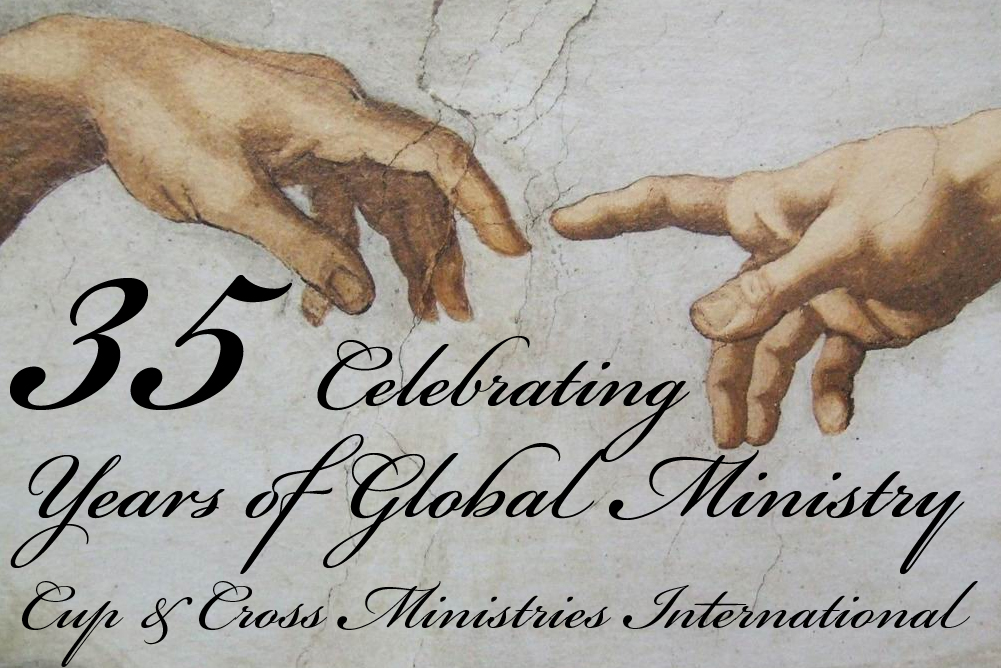
Russia’s Prophetic Imperial Road to Israel
August 30, 2025 by Cup&Cross
Filed under Featured, Missions, News, Publication
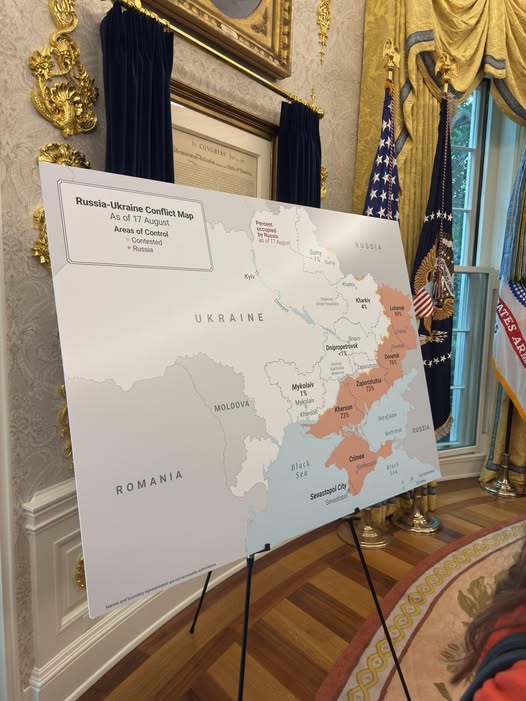
Ukraine is the hinge between Russia’s Eurasian interior and its southern theaters— the Black Sea, the Turkish Straits, the Eastern Mediterranean, and the Levant/Israel. Since 2022, battlefield developments in the Black Sea (attrition of the Black Sea Fleet, restrictions under the Montreux regime, and the end of the grain initiative) have reshaped Russia’s access and force projection toward the Middle East, where Moscow relies on long-term basing in Syria (Tartus/Khmeimim). In eschatological discourse, readings of Ezekiel 38–39, Daniel 11, and Revelation 20 often envision a “northern” vector toward Israel; while controlling Ukraine facilitates the logistical corridors by which a northern power could move toward the Levant.
1) Historical Perspective: the “imperial corridor” to the south
From Tsarist times through the USSR to the present, the drive to “warm waters” has been durable. Black Sea access and the Bosporus/Dardanelles are prerequisites for reaching the Mediterranean and, ultimately, the Levant/Israel. Ukraine, as a Black Sea state, constitutes the intermediate step between Russian continental depth and southern power projection. Biblical refs: Ezek 38:6, 15; Dan 11:40–45; Isa 41:2.
2) Geopolitics: the Black Sea and the Straits
In February 2022, Turkey invoked the Montreux Convention and closed the Straits to belligerents’ warships, constraining Russian naval rotations between the Med and the Black Sea and hampering amphibious options. Concurrently, Ukraine’s strikes—the sinking of the flagship Moskva (Apr 14, 2022), the Sevastopol dry-dock strike (Sept 2023), and repeated attacks on the Kerch Bridge (2022; 2023)—forced Russia to redistribute vessels away from Sevastopol and operate farther east/under greater risk, reducing freedom of action in the western Black Sea and approaches to the Mediterranean. The termination of the Black Sea grain deal (July 2023) further altered maritime risk and logistics.
3) Military-Strategic Logic: from the Ukrainian front to the Levant
Despite constraints at sea, Russia retains a strategic foothold in Syria through a 49-year lease at Tartus and a standing agreement for the Khmeimim air group—legal architecture for long-term Eastern Mediterranean presence and potential leverage vis-à-vis Israel. The Ukrainian theater is linked to this southern theater via maritime access (Black Sea/Straits) and via technology transfer (UAVs, air defense, long-range strike). Since 2022, Russia has localized production of Iranian-designed Shahed/Geran UAVs (Alabuga, Tatarstan), supporting a protracted war effort and shaping capabilities that could be repurposed across theaters, including the Levant. Whatever frictions may exist, the drone co-production pattern—financing, localization, scale—is well documented.
4) Biblical Perspective: Ezekiel, Daniel, Revelation
- Ezek 38–39 (Gog of Magog): a coalition “from the far north” advancing against Israel “in peace.” Contemporary application is not a one-to-one mapping to Ukraine; rather, it highlights northern approach vectors whose geography aligns with Black Sea–Anatolian–Levantine corridors.
- Dan 11:40–45: movements of a “king of the North” toward the “Beautiful Land” are often read typologically, consistent with north-to-south operational axes.
- Rev 20:7–9 (Gog and Magog): eschatological gathering of nations; not an identification of specific modern states, but a framework for northern-southern mobilizations.
5) Prophetic Scenarios and the “Last Days”
In prophetic discourse, “wars and rumors of wars” (Matt 24) function as general markers, not as a GPS of events. Ukraine is not named in Scripture, yet control over Ukraine affects Russia’s capacity to mass naval/air/cyber power toward Israel via the Black Sea and the Straits—especially if shore-based leverage persists at Tartus/Khmeimim. NATO’s enlargement with Finland (2023) and Sweden (2024) reshapes the northern balance, indirectly constraining Russian bandwidth for southern adventures.
Conclusion
Ukraine is a geostrategic key to Russia’s southern theaters. Post-2022 constraints in the Black Sea/Straits and attrition of the Black Sea Fleet have complicated Moscow’s ability to project power toward the Levant—unless offset by Syrian basing and asymmetric systems (UAVs, missiles). Eschatologically, this does not “prove” a direct fulfillment of Ezekiel 38–39; it delineates plausible corridors by which a northern power might act against Israel.
The Forgotten Etowah Revival
By 1907 Church of God overseer AJ Tomlinson was well aware of the Etowah outpowering going on in parallel with the Azusa Revival. He also used the Etowah L&N many times during his travels. But chose Cleveland (on the famous Copper Road route), because Cleveland had not seen revival just yet. And this was about to change soon…
Bradley County, Cleveland, Tennessee was the western terminus of the Copper Road where copper ore from Ducktown and Copperhill was brought by wagons to the East Tennessee & Georgia RR. It was completed to Cleveland from Dalton, Georgia in 1851. In 1905 the Southern Railway hired New York architect Don Barber to design what became known as “Terminal Station” of the Chattanooga Choo-Choo, which in parallel to the Etowah L&N Depot began construction in 1907 and opened in 1909. So, no, the choice Tomlinson made was not obvious at all, neither it was based on the train line per se. He did not want to compete with the Etowah and Chattanooga revivals, and settled for Cleveland instead…
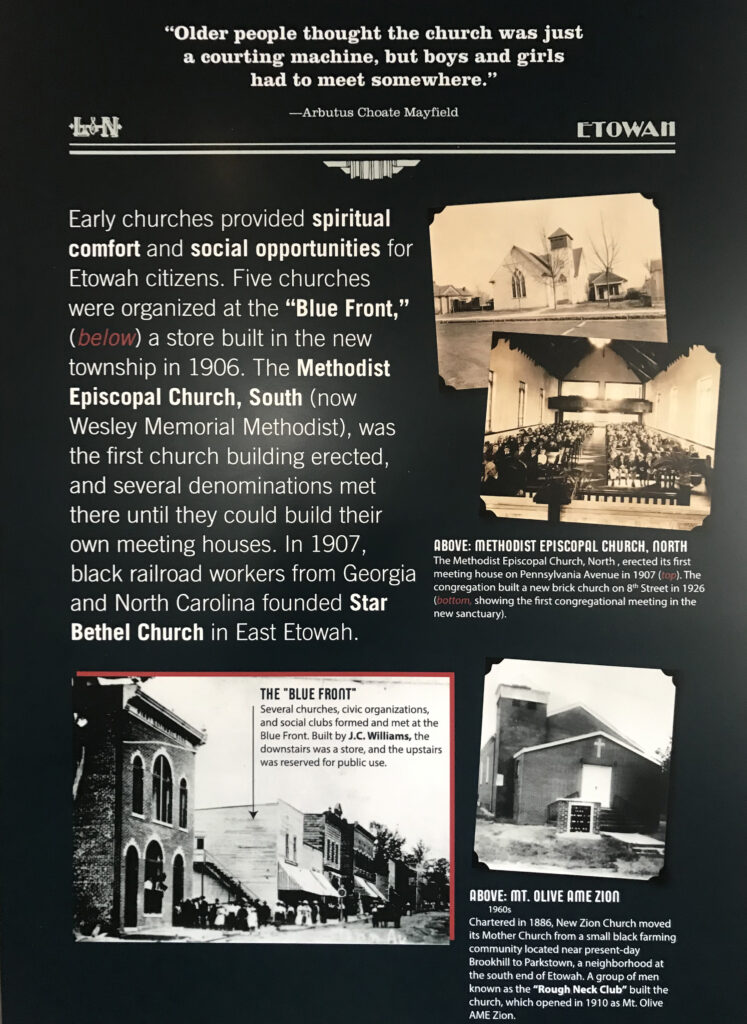 The Forgotten Etowah Revival
The Forgotten Etowah Revival
It started with the Old-Line Railroad quickly built in 1890 as part of a project to link Knoxville, TN to Marietta, GA by rail. Just a few short years afterwards, a distinctive feature was built as part of the line, the Hiwassee Loop, a circle of track that was built around Bald Mountain. The story told that when the workers came down from the mountain to build the L&N line and depot to connect the Hiwassee River Rail Loop, there wasn’t much to do except work. On the weekend, many of them flooded the old Methodist church across from today’s Etowah‘s chamber of commerce, mainly to look for women (as old timers plainly put it). А holiness preacher was carrying on a revival there, many were convicted under the power of the Holy Spirit and got saved.
Those were the years of ongoing holiness revivals across Appalachia. Out West, the Pentecostal revival at Azusa was already brewing. Much like the rest of the holiness outpourings, the Etowah revival swept through the area. Not just workers, but the local population was touched as well. The upper room at “Blue Front” built by J.C. Williams built in 1906, where revival meetings were held, became the starting point of at least five local congregations.
At the same time, the Church of God movement was gaining speed on the other side of the mountain. Murphy, Tellico Plains and Reliance all became sites of the first holiness Spirit outpourings. In just a short amount of time, the Church of God grew and moved down the trainline to Cleveland, TN. Interestingly enough, most of the trainline was built along old confederate routes, which followed the Trail of Tears.
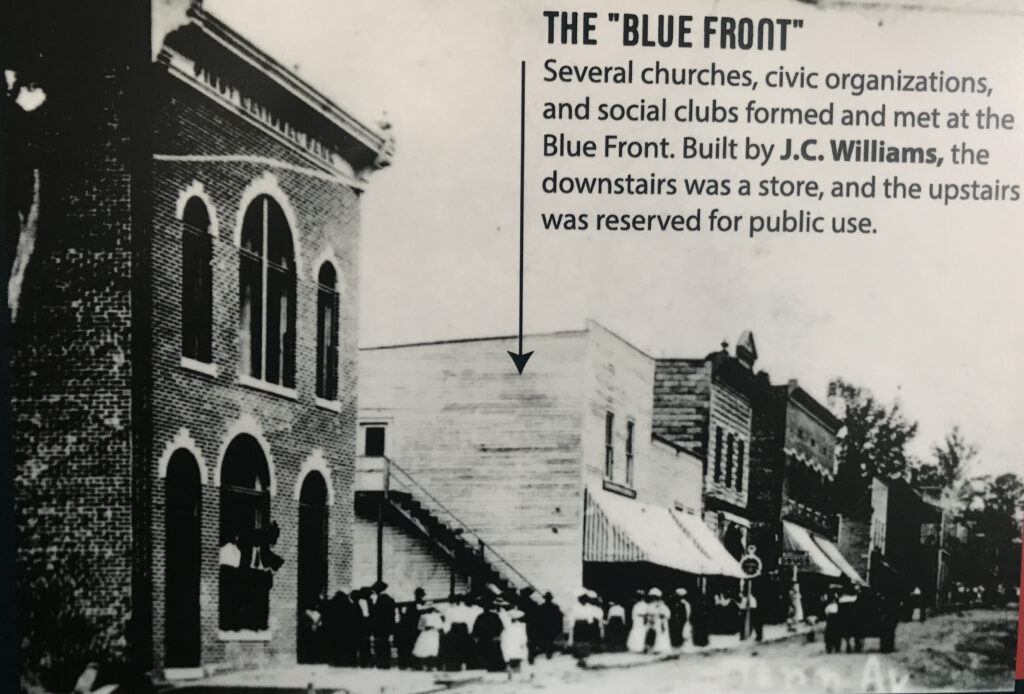
The Tellico Blockhouse was the starting point for the Old Federal Road, which connected Knoxville to Cherokee settlements in Georgia. The route ran from Niles Ferry on the Little Tennessee River near the present-day U.S. Highway 411 Bridge, southward into Georgia. Starting from the Niles Ferry Crossing of the Little Tennessee River, near the U.S. Highway 411 bridge, the road went straight to a point about two miles east of the present town of Madisonville, Tennessee. This location is 20 some miles north of the Tellico Plains area that marks the site of the beginning of the Church of God (Cleveland, Tennessee). The road continued southward via the Federal Trail connecting to the North Old Tellico Highway past the present site of Coltharp School, intersected Tennessee Highway 68 for a short distance and passed the site of the Nonaberg Church. East of Englewood, Tennessee it continued on the east side of McMinn Central High School and crossed Highway 411 near the railroad overpass. Along the west side of Etowah, the road continued near Cog Hill and the Hiwassee River near the mouth of Conasauga Creek where there was a ferry near the site of the John Hildebrand Mill. From the ferry on the Hiwassee River the road ran through the site of the present Benton, Tennessee courthouse. It continued on Welcome Valley Road and then crossed the Ocoee River at the Hildebrand Landing. From this point the road ran south and crossed U.S. Highway 64 where once stood the River Hills Church of God (Ocoee Church of God).
Revival Continues
In 2023, over a dozen of churches from the greater Conasauga, Reliance, Ocoee, Old Fort, Benton, and Delano communities along with the two oldest Polk County congregations at Cookson Creek and Friendship Baptist, joined piece by piece the original revival vision God has given to many ministers for this area of East Tennessee. While a few saw it as a spiritual connection with the brief spark of the Lee University student revival earlier in the year, most were convinced it was the restoration movement of the original Appalachian/Cherokee holiness outpouring, which took place among L&N Depot and Hiwassee River Rail Loop workers in the old Methodist church at the “Blue Front” across from Etowah‘s chamber of commerce. In 2023, the Polk Co. Revival began in September and carried on well through the fall until Thanksgiving. This year, even more churches in the area are praying again for a fresh outpouring of the Spirit expecting another revival to sweep the hearts of many in the area where no more than a century ago, the Early Revival Rain fell in abundance.
TRUTHS from AZUSA STREET REVIVAL by Frank Bartleman
“A revival almost always begins among the laity. The ecclesiastical leaders seldom welcome reformation.”
One reason for the depth of the work at “Azusa” was the fact that
the workers were not novices. They were largely called and prepared
for years, from the Holiness ranks, and from the mission field, etc.
They had been burnt out, tried and proven. They were largely
seasoned veterans. They had walked with God and learned deeply
of His Spirit. These were pioneers, “shock troops,” the Gideon´s
three hundred, to spread the fire around the world. Just as the
disciples had been prepared by Jesus.
We have now taken on a “mixed multitude.” And the seeds of
apostacy have had time to work. “First love” has been also
largely lost. The dog has “returned to his vomit” in many cases,
to Babylonic doctrines and practices. An enfeebled mother can
hardly be expected to bring forth healthy children.
The very truths that gave birth to the Pentecostal movement are
today generally rejected as too strong.
A revival almost always begins among the laity. The ecclesiastical
leaders seldom welcome reformation. History repeats itself. The
present leaders are too comfortably situated as a rule to desire
innovation that might require sacrifice on their part. And God’s
fire only falls on sacrifice. An empty altar receives no fire!
God has always sought a humble people. He can use no other…
There is always much need of heart preperation, in humility and
separation, before God can consistently come. The depth of
any revival will be determined exactly by the spirit of repentance
that is obtained. In fact, this is key to every true revival born of God.
Men’s hearts are being searched…it is a tremendous sifting time,
not only of actions but of inner motives. Nothing can escape the
all-searching eye of God.
30 years ago in Chicago
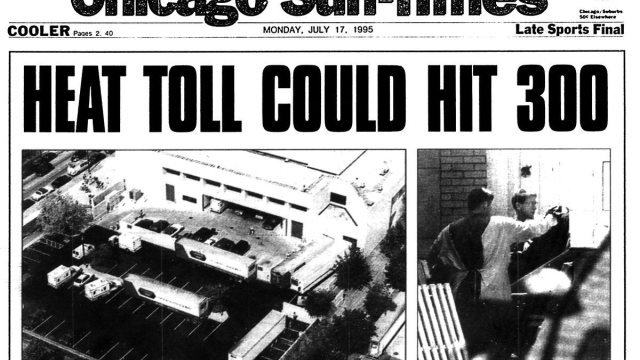
30 Years of the Bulgarian Church of God in Chicago
I left Chicago on this day 30 years ago (July 30, 1995). The Bulgarian church that day held service at 1 PM with 64 Bulgarians and many other internationals in attendance. Bulgarian students from the neighboring Indiana and Wisconsin attended as well. There was even a Bulgarian family from Alaska.
It was a Sunday. I left Chicago to preach in Beloit, WI that night and then left for Washington, D.C. the following morning. While driving north with quite the speed my Carolina blue Grand National began filling with white smoke. At first, I thought the air conditioner was on its last leg in the hot Chicago summer of 1995, but the air remained strong and cold. The cloud proceeded and it was so sensible that I had to slow down and basically stop on the side of the road. In my 35 years of ministry, I have only seen this one more time – in 2011 when the Glory of God descended over a youth camp we were preaching in the Bulgarian mountains. I did finally preach in Beloit and made it to D.C. the next day, but the vision of the cloud remained with me for the next 30 years.
Meanwhile, the word of mouth had spread and the Bulgarian church in Chicago was growing among the Bulgarian diaspora. On October 7, 1995, I was able to visit the church in Chicago again and present it to the National Overseer of the Bulgarian Church of God, Pastor Pavel Ignatov who visited the Bulgarian congregation in Chicago for the first time. By that time, it has become evident that the initial structuring for growth was giving more than expected results. The church became not only the first officially registered Bulgarian Pentecostal congregation in the United States, but also an important social and educational center able to minister to the 100,000 Bulgarians that live in the Great Lake region today.
Called to another mission, I left Chicago on July 30, 1995. The church bulletin upon my departure under Farewell and Appreciation read: “Today we are saying thank you to Dony for a job well done this past summer. He has served our church faithfully, and has been a tremendous blessing to Narragansett Ministries. Immediately following worship this morning, there is a dinner in Dony’s honor in the fellowship hall. And everyone is invited to attend.” Quiescently, while writing this next book for the 30th anniversary of the Bulgarian Church in Chicago, I was able to find this last bulletin in a box with several dozen letters I had sent weekly to my parents in Bulgaria. Surprising even to myself, those letters contain pictures, documents, dates, growth charts and progression predictions that are surprising even to me today. I remember spending countless nights in prayer, contemplating and strategizing over the new Bulgarian church plant, but I had forgotten all this was carefully documented as a case study.
The church congregation presented me with a plaque that represented my efforts and work in Chicago, which I have also kept until now. Because this plaque represents the prayers and the vision of many who are continuing the work today, establishing and leading Bulgarian churches around the world to providing pastoral care for many who have left the homeland in search for a better life. To these ministers goes my personal token of appreciation and thanks, “Well done thou good and faithful!” For me personally today a quarter of a century later, this plaque represents one very simply thing – I never betrayed my dreams. And in my book, this is well done…
Pentecostal Theology of Freedom for the Postcommunist Era
“Stand fast therefore in the liberty wherewith
Christ hath made us free” for “if the Son therefore
shall make you free, ye shall be free indeed”
This paper is intended as a part of larger research entitled Theology of the Persecuted Church. It focuses on they way freedom is understood by the underground church and its successor, the postcommunist church after the fall of the Communist regime. In this sense, the research presents the theological view of freedom from the time of postmodern transition in Eastern Europe in retrospect with the times of underground worship and in dialogue with the major modern theologians. The main purpose is to construct an authentic view of freedom in the major areas of the life and ministry of the postcommunist Pentecostal church.
Postcommunist Europe
On his first official visit to West Germany in May 1989, Mikhail Gorbachev informed Chancellor Kohl that the Brezhnev doctrine had been abandoned and Moscow was no longer willing to use force to prevent democratic transformation of its satellite states. At 6:53 p.m. on November 9, 1989, a member of the new East German government gave a press conference to inform that the new East German travel law would be implemented immediately. At the East Berlin Bornholmer Strasse, the people demanded to open the border. At 10:30 p.m. the border was opened.[1] That meant the fall of the Berlin Wall and the end of the Cold War.
The unification of one Germany brought the clash of two political extremes within one nation. It brought together two Europes kept apart for half-a-century, a dynamic which introduced the continent to a new set of opportunities among which was the vision for a unified Europe and its realization.
A new set of dilemmas was introduced as well. Among all economical, political, social, cultural and simply human points of diversity, religion remained central for the process through which the European Union was emerging. The official “United in Diversity” (reminding of the American E Pluribus Unum) claimed unification, without mentioning God. The new European constitution announced that Europe draws “inspiration from the cultural, religious and humanist inheritance of Europe.”[2]
For us who lived in the last days of Communist Bulgarian, the fall of the wall was a miracle which the world witnessed. Coming out from the severe Communist persecution and surrounded by the Balkan religious wars, suddenly the country of Bulgaria experienced a time of liberation which gave the start of spiritual revival mobilizing Bulgarian Protestants. In the midst of extreme poverty, due to prolonged economical crisis, this revival became an answer for many. It also provided a sense of liberation, but not in the Western political understanding of democracy and freedom, but rather liberation toward the realization of the Kingdom, a world much higher, much better and in way more realistic than any human ideality. The liberation from sin then turns not only into a social movement, but as a theological conception it provides an alternative to the existing culture thus becoming a reaction against the surrounding context and proposing a new theological model and a new paradigm for life itself based on substantive faith and belief.
Freedom of Will
Even when approached theologically, in the Eastern European postcommunist context today, the term freedom of will carries a strong political nuance. For many Eastern European Protestants, freedom characterizes the struggle against the communism regime and the divine motivation to endure it as a calling of faith for the individual and the community.
The years before communist era were characterized with opposition against the historical monopoly of the Eastern Orthodox Church. In this context, the protestant movement in Bulgaria also struggled against spiritual dominion defending the cause of religious freedom and the right of each individual and community to believe and express beliefs.
The hundred years of Bulgarian Protestantism have been accompanied with constant struggle against oppression of conscience and will thus creating a general acceptance of free human will. This has coincided with the theology of the largest and fastest growing Evangelical movements in Bulgaria. In this context, even evangelical churches, like the Baptists, have grown to accept and practice the doctrine of free will.
Based on the political, socioeconomic and purely ecclesial factors, in postcommunist Eastern Europe, the Calvinistic paradigm of predestination and election as practiced in a Western sense are not successful. This is based partially on their new doctrinal presence within the Bulgarian reality and their untested effectiveness through under persecution. It is also natural that they are often qualified in parallel with political and religious oppression, and therefore rejected as divine attributes or actions. If human regimes are oppressive through limiting freedom and consciences, how is God to identify with such regimes and practice the same type of “horrible decree?” On the contrary, in Eastern European Protestant theology, God is seen as a Liberator of human consciences and a desire for freedom.
By no means, is this tension to be confused with a denial of the total authority of God. God remains the electing God in Jesus Christ, but how?[3] Is it through a “horrible decree” or through a personal life-changing experience defined by the Bible? Is it through an oppressive act of lawful but unconditional predetermination which God by His nature is omnipotent to implement, or through an act of supernatural transformation of humanity through divine self-sacrifice? And does this election barricade every possible human choice? No, as it is obvious in the denial of Peter; but also as seen in his restoration, that every choice of human will is answered by God through unconditional divine love.
Therefore, we experience “the secret of predestination to blessedness,” not in a cause and effect paradigm as Augustine and the Reformers, but rather through preserving its significance by experiencing the love of God.[4] Thus, the human will is freed by the love of God to receive salvation for eternity. The human freedom then is not ignored or oppressed, but on the contrary it is “placed in the context of cosmic drama” where the real bondage is not the one by God, but the one by sin which oppresses the human will and distances it to death. The Gospel, however, proclaims the victory of Christ over these oppressors thus liberating human will to its initial creation state as a gift from God.[5] This theology comes from a concrete experience of God in real life, and the quest to serve and follow God. As theology shows that the truth about God and the truth about ourselves always go together, the experience of God is a constant tension and a dynamic process, rather than blind servanthood to rigid principles that can never fully encompass the divine will. And through this experience of liberation of the human will in order that one may be free to choose salvation through Christ, God establishes His “testament of freedom.”[6]
Freedom from Oppression
As God liberates humanity from sin, He liberates it from sin’s moral and social consequences. Thus, forgiveness of sin presupposes not only the quest for sanctification and perfection after the image of God, but also the struggle against oppression and establishment of social balance. As the above shows, the postcommunist revival in Eastern Europe cannot be explored apart from the contextual political and socioeconomic dynamics. The reason for this is that the Spirit with value before God is a social spirit that makes the expression of the divine liberation the very purpose of the existence of the church.[7] The practice of this expression challenges the relationship between theology and practice as it questions theology’s epistemological and praxis relationship to the oppressed with whom Christ is crucified.[8]
As in such context, theology is challenged to identify with action, the church must choose between contextualizing and enforcing theology. To choose contextualization is to attempt to relate it to the existing culture thus creating a state of relativism. Such approach is observed in some Asian and Black theology. The danger is to go beyond the boundary pass which theology ceases being theology in action and becomes simply a nominal religious culture. In Eastern Europe, such approach has been long-practiced by the Eastern Orthodox and has unquestionably resulted in nominal religion. The nominality of its expression has been a factor preventing the experience of God, thus denouncing the very reason for the church’s existence. Attempts to restore the Eastern Orthodox “symphony” between church and state have altered the existence of the independent synods which claim the succession of the same historical religious institution.
The second direction, to move toward enforcement of theology after the paradigm proposed by Liberation theology, is quiet a dangerous approach often resulting in armed conflicts. Keeping in mind the historical tension on the Balkans and Bulgaria’s success in undergoing the postcommunist transition without an armed civil conflict, this approach is virtually inapplicable. Therefore, an alternative must be proposed before history itself become oppression.
In this context, a move toward a theology of freedom seems most reasonable. It must purpose to prevent political and socioeconomic oppressions which are already present in various legal and illegal forms in Bulgaria. Such paradigm must also be concerned with intrachurch oppressive tensions which are present both among and within religious denominations, striving especially against such oppressive modes that come from the desire of an oppressed mentality to oppress others.
Such working model of social transformation is presented in Paul’s Epistle to Philemon. An older interpretation of the book explains that Onesimus, a runaway slave, meets Paul in prison, becomes a Christian and is sent by Paul back to his master. A more cotemporary interpretation claims that Onesimus is a slave sent by Philemon to help care for Paul in prison where he converts to Christianity and desires to stay with Paul as a missionary associate.
Regardless of the interpretation of the story plot, the epistle carefully presents a more in-depth set of problems that deal with persecution, imperialism, slavery, mastership, classes, ownership, imprisonment and above all justice. It further makes a more aggressive mood and places the church, represented in the text not merely by masses, but by the very divine appointment of apostolic authority.
The theme of imprisonment as a direct result of persecution is clearly present through the epistle’s plot and more specifically verses 1, 9, 13 where Paul uses the expression “prisoner of Christ” to describe his present status. The expression “prisoner of Christ” carries a sense of belongingness making the phrase different than the sometimes rendered “prisoner for Christ.” While the latter wrong rendering moves the focus toward the purpose of Paul’s imprisonment, the Greek genitive in the phrase “prisoner of Christ” denotes ownership. Although imprisoned in a Roman prison and kept by a Roman guard, Paul denies the Roman Empire ownership of himself, thus claming that he is owned by Christ alone. This is also a denial of the Roman citizenship that has led to this oppressive state of persecution and the recognition of a citizenship in the divine reality of liberation.
Paul’s negation goes a step further, proposing that while the Roman Empire may be authoritative in the temporal context, by no means it is authoritative in the spiritual eternal reality. Having established the temporality of Rome and the eternity of God, Paul denies to the Roman Empire the right to pronounce judgment over social injustice and to establish social status or world order, proposing that no one but the Christian church is the agent divinely designed and supernaturally equipped for these functions. The social injustice of persecution and wrongful imprisonment, the social tensions between classes, the problems within the church and every dilemma presented in the epistle are to be judged by no one but God through his elect. The reality of the situation is that the church is experiencing severe persecuting because the Roman Empire is denying the church social space. Paul, however, denies the reality of such oppressive human system and claims that the church is the one that must deny social space for oppressive structures as the Roman Empire.
The text calls for revolution; not merely, a revolution in the physical violent sense, but a revolution of the mind where human existence and mentality are liberated through Biblical paradigm combined with divine supernatural power to participate in a new spiritual social reality where justice is set by the standard of God. Such a move calls for a new paradigm and for a theology of freedom which creates an anti-culture and an alternative culture to the existing oppressive system. Such idea challenges the church with the claim that Christianity is and should be a scandal and an offence to the world, and not merely a religion but the belief that “Jesus is the most hazardous of all hazards.”[9]
Feast of Freedom or the Bulgarian Easter
Amidst political and socioeconomic crises since the fall of the Berlin Wall, Bulgaria has experienced a rebirth of Bulgarian spirituality. Many observers have referred to this restoration process as the rebirth of the Bulgarian Easter, and even which historically has been connected with the unity and power of the Bulgarian nation.
Bulgaria accepted a Christian country in 864 AD under the reign of Kniaz Boris I. A millennium later, in the middle of the 19th century, Bulgaria found itself occupied by the Ottoman Empire and religiously restricted by the Greek Orthodox Patriarchy which dictated the religious expression of the Bulgarian church.
On April 3, 1860, during Easter Sunday service in Constantinople, the Bulgarian bishop Illarion of Makriopol expressed the will of the Bulgarian people by solemnly proclaiming the separation of the Bulgarian church from the patriarchal in Constantinople. The day commemorating the Resurrection of Jesus Christ coincided with the resuscitation of the Bulgarian people. Although, the struggle continued for another decade, under the influence of Russia, Turkey was forced to legally recognize the independence of the Bulgarian Orthodox Church. In 1870 a firman of the sultan decreed the establishment of an autonomous Bulgarian church institution.
The connection between the historical Bulgarian Easter and the contemporary rebirth of Bulgarian spirituality has been used in many aspects of the Bulgarian politics and culture at the beginning of the 21st century. As part of the Eastern Church, Bulgarian orthodox theology pays much more attention to the resurrection rather than to the birth of Christ thus placing its eschatological hope in a future experience rather then a past one. Such dynamic is natural, as the acceptance of Christianity in Bulgaria purposes to bring hope in national politics and communal life. Thus, in an almost historical tradition, the Bulgarian Easter represents the Bulgarian eschatological hope for a supernatural national revival. It also communicates with the sense of liberation from political, economical and religious oppression and a longing for the freedom to live life.
The Bulgarian Easter then provides an alternative to the present moment of tension and straggle in the crucifixion. Similar to Moltmann’s view of the resurrection of Christ, the Bulgarian hope foresees the resurrection of the Bulgarian nation as a divine act of protest against oppression and injustice and as recognition of God’s passion for life.[10] Thus, the resurrection is an alternative not only to the present world, but also to the reality of eternal death.
Death is therefore seen not only as an agent of eternity, but also as an agent of fear, suffering and oppression in the present reality which affects life in all its economical, political, social and even religious aspects. As death diminishes the value of life, the liberating power from Easter often remains ignored. But in order for the church to continue being a church, it must speak as a witness of the resurrection which is impossible without participating in God’s divine liberation which recreates the word to its original state of creation. Thus, the hope of Easter means rebirth of the living hope.
The resurrection hope is an influential factor which directs the life dynamics of the church beyond its walls. Being liberated from sin, the believer desires the liberation of others and claims the right to serve. But true Biblical servanthood cannot exist and therefore does not tolerate oppression, thus becoming a social transformation factor in the midst of oppressive cultures. The resurrected church rebels against the destruction of life and the denial of the right of very human to live. But different than other human systems, the church does not feed off its resistance against oppression. Its source of power is the eschatological hope for the full restoration of life and its eternal continuation in eternity.
A final question must be raised about the pessimistic character of such hope, as traditional evangelical eschatology in Bulgaria has been premillennial and due to its Pentecostal majority clearly pretribulation. Such eschatological views, at large, have been considered to be pessimistic and escapist in nature due to their strong focus on the future. Yet, such determinative presupposition seems inaccurate and much limited in its observation when applied within the postcommunist context where Protestant churches have been greatly involved in the struggle against oppressive regimes and constraining politics even to the point of martyrdom.
It is then natural, that in the underground context of persecution it is unthinkable for the church to identify with the regime in anyway. Actually, such identification is vied by the believers as spiritual treason and cooperation with authority is viewed as backsliding. By no means, however, is such a premillennial eschatological view in this context pessimistic for the church. Neither does the church remain unconcerned with the present reality. On the contrary, through its very act of negation of the right of an oppressive system to dictate reality, the church establishes an alternative culture which is the Kingdom of God. Thus in the midst of persecution and oppression, the church remains in its Biblical boundaries as an agent of the Kingdom of God by providing eschatological hope.
Yes, this eschatological view is escapist, as it promotes eternal separation from the oppressive reality. What other alternative can a persecuted and underground church find to survive and relate to the Biblical image of the ecclesia and at the same time it is clearly concerned with the transformation of the present world as shown above? For while its pessimism concerns the oppressive system of the world, its optimism declares the church as an already-reality in which freedom of sin, death and oppression and eternity with God is celebrated. Therefore, the church itself remains an optimistic reality and optimistic eschatological hope. For, without this hope the tension of life toward future and even life it self will vanish.[11] Without hope for the beyond, we remain in the now for eternity.
Epilogue
Due to its relational and reactional role to historical process, Eastern European postcommunist theology is a new historical and theological event. Yet, as theology of freedom, it relates to other theological approaches internationally. This similarity is enforced by the approaching postmodern era which the Bulgarian nation seems unprepared to understand. In such context, the church and its theology become the agents providing answers to social tensions.
Postcommunist theology provides a point of departure from the oppressive system of the communist regime toward a new social and ecclesial alternative. Such dynamic is by no means new to the Protestant movement in Bulgaria, which has dealt successfully with these same issues even in more severe context of underground existence and persecution. Therefore, the church has proved its commitment to identify with the oppressed through addressing and engaging its experience through the experience of God and its adequate and substantive theological interpretation. Such approach provides an alternative to oppressive system and structures, unquestionably critiques their tools and methods, and rebukes the agents who represent and practice them, thus denying them place in history.
A further concern for developing strategies for social transformation is also strongly present including education, law, politics and economics. These dynamics employ Christians in a common task and motivate the church for further development and implementation in order to connect theology with practice and thus to fulfill the divine calling for church’s role in the processes of restoration of justice and social transformation, both now and eschatologically.
Bibliography
Anderson, David E. “European Union Debate on Religion in Constitution Continues”
May 26, 2004.
Barth, Karl (tr. E.C. Hoskyns), The Epistle to the Romans (Oxford: Oxford University
Press: n/a).
Ford, David F. ed., The Modern Theologians (Malden: Blackwell Publishers, 1997).
Geffrey B. Kelly & F. Burton Nelson, A Testament to Freedom: The Essential Writings
of Dietrich Bonhoeffer (San Francisco: Harper Publishing House, 1995).
Green, Clifford. Karl Barth: Theologian of Freedom (Minneapolis: Fortress Press, 1989).
Grentz, Stanley J. Theology for the Community of God (Grand Rapids: Eerdmans
Publishing Company, 1994).
Johnson, Ed. Associated Press, June 19, 2004.
Moltmann, Jürgen. The Power of the Powerless, (Norwich: SCM Press Ltd., 1983).
Taylor, Mark K. Paul Tillich: Theologian of the Boundaries (London: Collins, 1987).
[1] The Fall of the Berlin Wall, http://www.dailysoft.com/berlinwall/history/fall-of-berlinwall.htm June 29, 2004; also Jeremy Isaacs and Taylor Downing, The Cold War, Thomas Fleming, The Berlin Wall and Wolfgang Schneider, Leipziger Demotagebuch.
[2] Ed Johnson, Associated Press, June 19, 2004 and David E. Anderson, “European Union Debate on Religion in Constitution Continues” May 26, 2004.
[3] Clifford Green, Karl Barth: Theologian of Freedom (Minneapolis: Fortress Press, 1989), 184.
[4] Karl Barth, (tr. E.C. Hoskyns), The Epistle to the Romans (Oxford: Oxford University Press: n/a), 324.
[5] Stanley J. Grentz, Theology for the Community of God (Grand Rapids: Eerdmans Publishing Company, 1994), 437.
[6] Geffrey B. Kelly & F. Burton Nelson, A Testament to Freedom: The Essential Writings of Dietrich Bonhoeffer (San Francisco: Harper Publishing House, 1995).
[7] Green, 106.
[8] David F. Ford, ed., The Modern Theologians (Malden: Blackwell Publishers, 1997), 369.
[9] Barth, 99.
[10] Jürgen Moltmann, The Power of the Powerless, (Norwich: SCM Press Ltd., 1983).
[11] Mark K. Taylor, Paul Tillich: Theologian of the Boundaries (London: Collins, 1987), 325.
Pentecostal articles for Pentecost Sunday
Offering a few recent Pentecostal articles in light of the upcoming Pentecost Sunday celebration: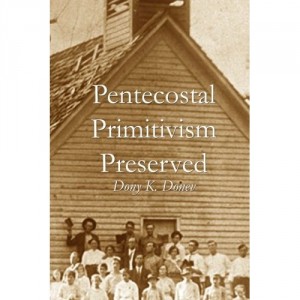
- The Forgotten Azusa Street Mission: The Place where the First Pentecostals Met
- Diamonds in the Rough-N-Ready Pentecostal Series (Complete)
- 95th anniversary of the Pentecostal movement in Bulgaria
- Toward a Pentecostal Solution to the Refugee Crises in the European Union
- Historical and Doctrinal Formation of Holiness Teachings and Praxis among Bulgarian Pentecostals
- Pacifism as a Social Stand for Holiness among Early Bulgarian Pentecostals
- The Practice of Corporate Holiness within the Communion Service of Bulgarian Pentecostals
- Sanctification and Personal Holiness among Early Bulgarian Pentecostals
- First Pentecostal Missionaries to Bulgaria (1920)
- Historical and Doctrinal Formation of Holiness Teachings and Praxis among Bulgarian Pentecostals
- The Everlasting Gospel: The Significance of Eschatology in the Development of Pentecostal Thought
- Online Pentecostal Academic Journals
- What made us Pentecostal?
- Pentecostalism and Post-Modern Social Transformation
- Obama, Marxism and Pentecostal Identity
- Why I Decided to Publish Pentecostal Primitivism?
- Historic Pentecostal Revival Tour in Bulgaria Continues
- The Land of Pentecostals
- Pentecostal Theological Seminary Address
- A Truly Pentecostal Water Baptism






